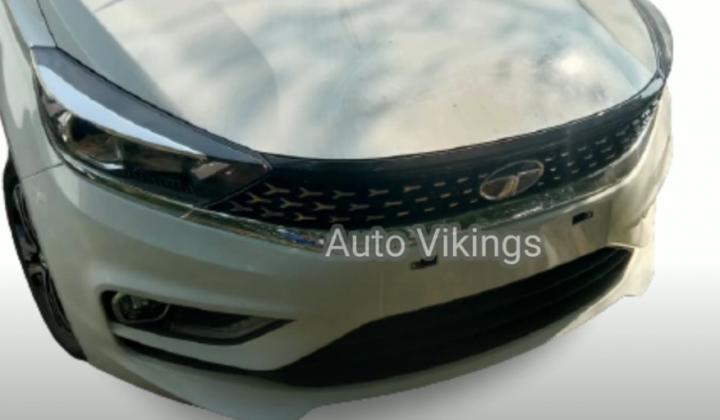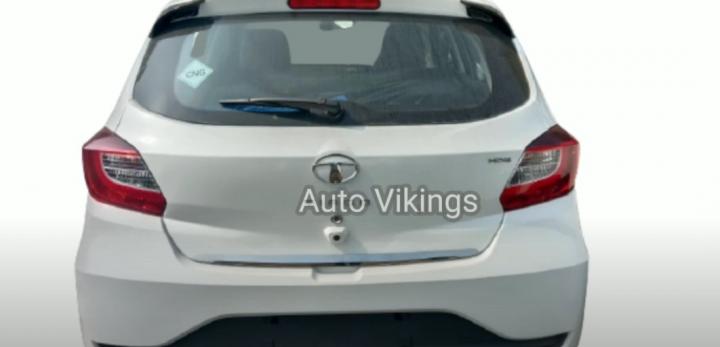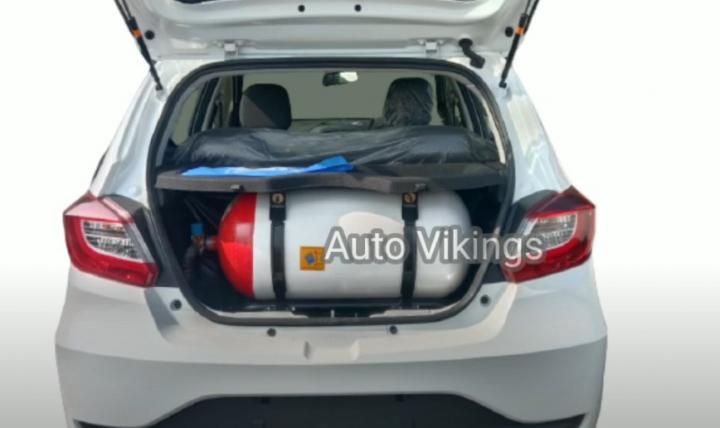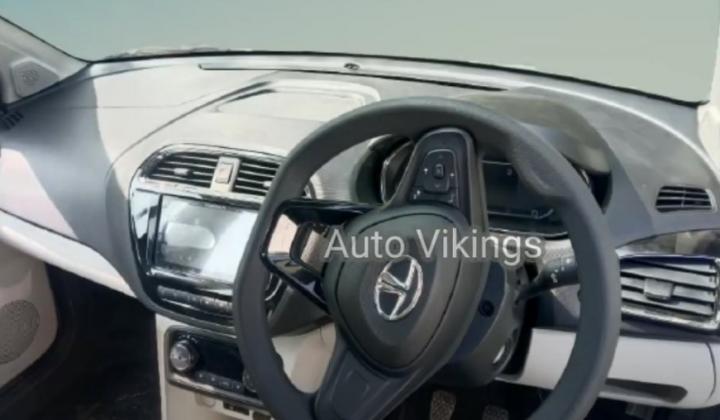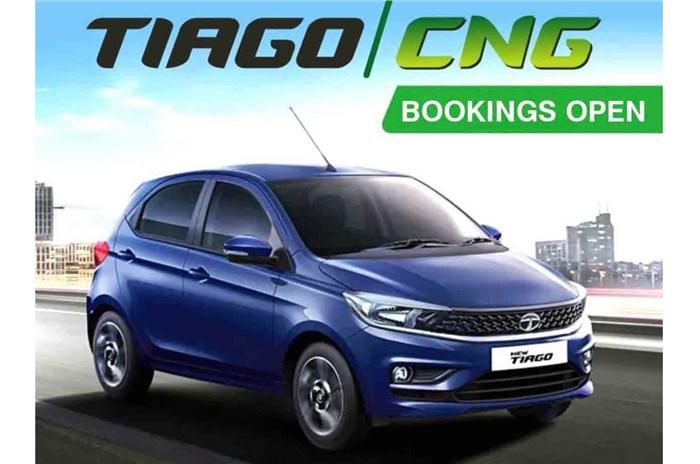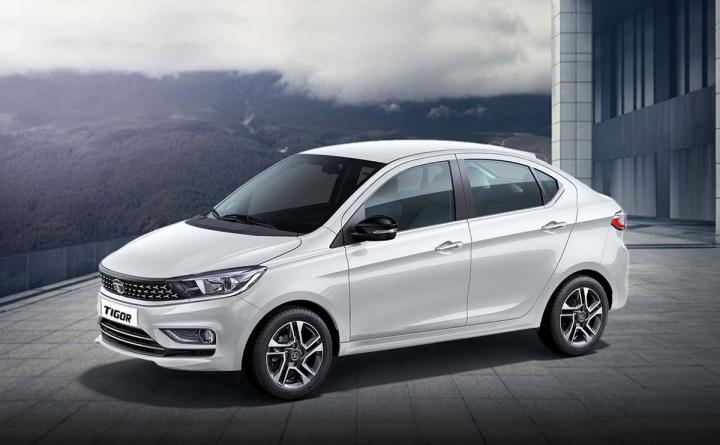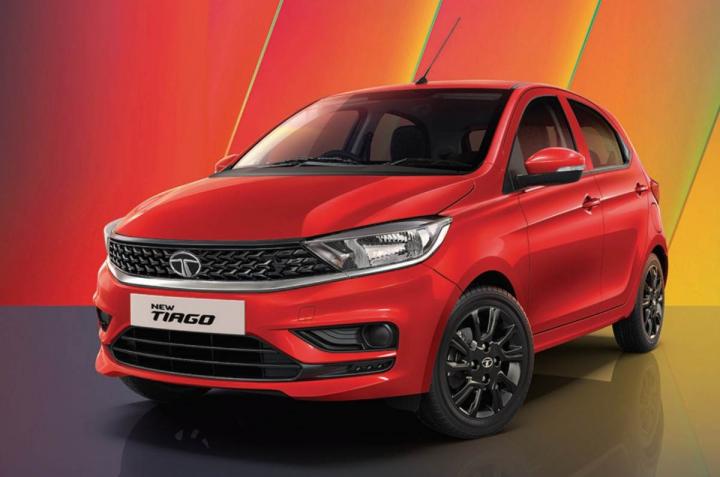News
2022 Tata Tiago CNG: Our observations after a day of driving
The good driveability, light controls and all round visibility along with the compact size, make the Tiago very easy to drive and park in the city. Sure, there is a power deficit vs petrol, yet the Tiago's CNG mode is extremely useable & driveable in the city.
Driving the Tata Tiago 1.2L CNG
The 1.2-litre, 3-cylinder engine puts out 72 BHP @ 6,000 rpm & 95 Nm @ 3,500 rpm in CNG mode. That's 13 BHP & 18 Nm lower than in petrol mode. Summary = its driveable and friendly in the city, but just okay on the highway:

Before we get to the driving part, here’s a glance at what happens in a sequential CNG kit. CNG is stored at high pressure in the storage tank (around 200 bar). When the gas is to be introduced into the engine, it doesn’t have to be at such high pressure. Hence, it is sent through high-pressure lines towards a pressure regulator/reducer. This reducer brings down the pressure to usable levels and then directs the gas towards the engine through a low-pressure filter that removes the impurities and moisture.
If you’ve driven a CNG car before, you might be aware of the fact that it’s always recommended (especially on cold start) to start the car in petrol mode and switch to CNG mode after some time. That gives the engine some time to get proper lubrication and reach the proper temperature. However, in the Tata Tiago iCNG, things are a little different. The car starts in CNG mode if you have switched it off in CNG mode! Tata says that drivers don’t have to worry about switching to CNG. IMHO, this is an unnecessary feature, and an automatic switch to CNG after running on petrol for some time would’ve been preferred. That’s the system the WagonR CNG employs, where it switches to CNG mode after about 20 seconds of running on petrol.
Press the light clutch and turn the key to crank the engine. Start driving and you realise that the city driveability is decent. GTO & Aditya drove a CNG car after a while and were pleasantly surprised. If efficiency is what you are after, you can go up the gears smoothly with easy throttle inputs and you won’t find the Tiago complaining with a judder. The engine isn’t dead at low rpms. There’s enough pep on tap for city driving and you can easily keep up with the traffic and close gaps to the cars in front. The good driveability, light controls and all round visibility along with the compact size, make the Tiago very easy to drive and park in the city. Sure, there is a power deficit vs petrol, yet the Tiago's CNG mode is extremely useable & driveable in the city.
You can switch between petrol and CNG modes by pressing the sweetly integrated ‘CNG’ button below the touchscreen. Also, the car will automatically switch to petrol mode in case of low CNG levels. What you will notice is the throttle response is a little dull in CNG mode, yet still at an acceptable level. An unforeseen advantage of this dulled throttle response is that it makes the drive smoother, more so when you compare it with driving the pure petrol version of the Tiago, where you have to modulate the clutch and accelerator more consciously for a smooth drive. Another thing you will notice while driving in CNG mode is the air-con still manages to cool the cabin effectively. This is a gripe in some other CNG cars where there is a considerable drop in the AC performance in CNG mode.
Out on the highway, performance is mediocre and the Tiago iCNG behaves as you would expect a budget hatchback should. As mentioned earlier, the engine isn’t dead at low revs. It starts coming in its stride at 2,000 rpm and when you cross 3,000 rpm, the engine starts pulling well. The 72 BHP in CNG mode is adequate for commuting in the middle lane. At the upper end of the rev band though, you will notice a performance deficit to the petrol. It's not got much of a top-end. The overall performance is still alright for sedate economy-oriented drivers. You can cruise at 100 km/h in 5th gear while the engine revs at 2,800 rpm. The climb from 100 km/h to 120 km/h is a bit of a struggle though. At 120 km/h, the engine revs at ~3,600 rpm, but we recommend sticking to 100 km/h on the highways. That’s where the engine is in its comfort zone. When you need to overtake, a downshift is a must to get the engine into its powerband. The unit won't get high-revving enthusiasts interested. While it revs till ~ 6,000 rpm, progress is very slow beyond 5,000 rpm.
Tata claims that the Tiago iCNG has better gradeability than most other CNG cars, so you don’t have to switch to petrol mode while going up an incline. We found this to be true to an extent as the Tiago didn’t struggle on some everyday uphill sections we tried.
When it comes to shifting between CNG and petrol, on the move, the action is seamless. While shifting from petrol to CNG, the system makes a "clunk" sound, but it is muted and not as loud as some rivals.
The Tiago iCNG uses the same TA65 gearbox (also seen in the Indica eV2) as the regular Tiago, Tigor, Altroz and Punch. The 5-speed manual gearbox's throws aren't long and the shifter's operation is light and pleasant to use, although it isn’t Hyundai or VW-like in slickness. There is some notchiness to it. Its gates are well-defined though and we had no trouble slotting into the gear we wanted to engage. What you will appreciate is the clutch, which is very light and has a short travel range. It is a boon in bumper-to-bumper traffic.
Noise, Vibration & Harshness (NVH)
This is a 3-cylinder engine and that’s pretty evident when you start the car. There’s cabin shake and you can feel the vibrations seeping into the cabin. Even on the move, you will always be aware that it’s a 3-cylinder engine.
While engine NVH is still tolerable in the city and you’ll get used to it, on the highway, it starts getting loud + coarse at high revs, especially above 4,500 rpm.
Wind noise starts creeping in at 100 km/h and road and tyre noise are on the higher side. Even at 80-90 km/h, road and tyre noise are audible.
Mileage & Fuel Economy
The Tiago iCNG’s fuel economy is rated at 26.49 km/kg. Now, while the Tiago iCNG is the most powerful CNG car on offer in its segment, it is not as economical as its competitors. The claimed fuel efficiency of the WagonR is 32.52 km/kg and that of the new Celerio is 35.60 km/kg. That's like a 25 - 40% difference.
The important thing to remember is that CNG fuel economy heavily depends on your driving style. Some owners have achieved the claimed economy figures (or very close numbers) of their CNG cars with sedate driving.
The Tiago iCNG is equipped with an NGV1 receptacle nozzle that allows for faster and safer refuelling. Notice the switch at the top? That’s the micro switch which switches off the ignition as soon as the fuel lid is opened. The switch will also not allow the engine to start until the lid is closed. Both these features aren’t exclusive to the Tiago, the competitors also have them. The back of the fuel lid has the CNG certification plate. The ‘Tata’ badging on the plate indicates that the CNG kit has been factory fitted:

Here’s something you might see these days at CNG pumps in Mumbai - long queues for filling CNG. Things are getting better and a lot of existing petrol pumps have started providing CNG as well. While CNG cars are rising in popularity, the price of CNG is also rising rapidly. In Mumbai, it has gone up from Rs. 54.57 to Rs. 66 in a period of 3 months (source):

While filling, all occupants will have to get out of the vehicle - a safety precaution that is followed by all CNG pumps and is unavoidable. It’s fine if someone is driving alone, but a major inconvenience if you are travelling with elders. The reason why everyone has to get out is that CNG is stored at a very high pressure (~200 bar) and the smallest crack in the system can cause a major mishap, starting from inside the vehicle. To put 200 bar in perspective, 30 psi tyre pressure is equivalent to 2 bar (multiply that by 100):

Suspension
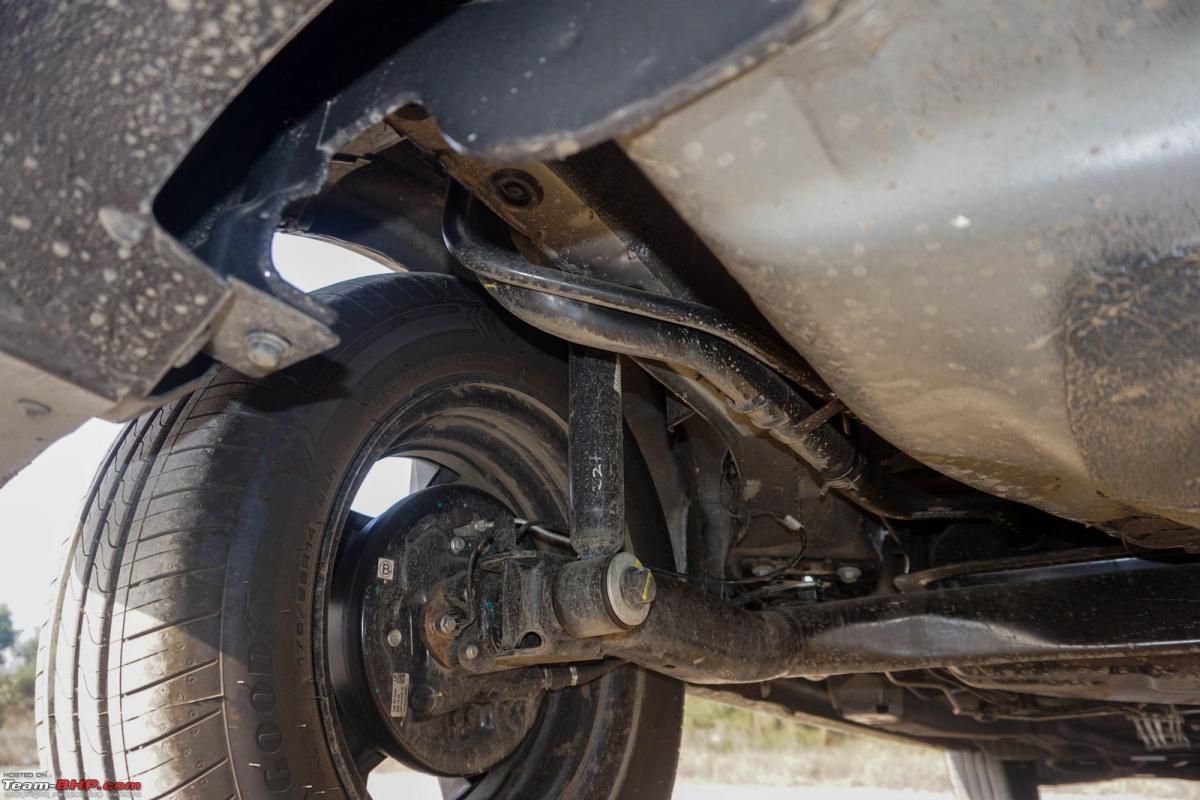
Ride Comfort
The Tiago iCNG gets a MacPherson strut suspension at the front and a twist-beam dual-path strut suspension at the rear. It rides on 14-inch rims shod with 175/65 section tyres. The recommended tyre pressure rating is 33 psi at the front and 36 psi at the rear. This makes sense as the CNG tank has been placed in the boot, adding weight at the back. One of the advantages of getting a factory-fitted CNG kit is you don’t have to worry about suspension tuning or adding coil spring spacers at the back. The manufacturer’s R&D team takes care of everything. The Tiago’s suspension has been stiffened up to take the added kerb weight of ~100 kg.
While driving with the recommended tyre pressure rating, you will notice that the suspension has been made firmer. Yet ride quality is still compliant enough on regular roads. On the other hand, you will feel broken roads more and sharp bumps do come in stronger. If you usually drive alone or with the occasional one / two passengers, dropping the tyre pressures to 33 psi all round will improve the ride.
Handling & Dynamics
The Tiago's straight-line stability is very good for the segment and the dynamics are overall safe & conservative...just the kind of neutral behaviour you'd expect of a family hatchback. Nothing to write home about, nothing to complain about either. You’ll be cruising at 100 – 120 km/h without feeling nervous or unsettled.
Tata's claim that that no other hatchback from the segment has a similar suspension setup as the Tiago's semi-independent rear suspension with a twist beam + dual path struts is true. All the other cars get simple setups where the damper is near the wheel and the spring is on the rear axle. In the Tiago however, you have a rear shock absorber assembly, which means that the damper and the spring are one single unit. This allows more independent movement of the rear wheels, but you still have the rigid axle, ergo – 'semi-independent'. So, what exactly is the difference in the real world? For starters, more body control. Body roll is controlled as compared to other cars in the segment and it aids the handling characteristics of the car too.
Get on some twisty roads and you’ll appreciate the suspension setup even more. The car feels agile and you can carry good speed into corners. The Tiago holds on to its line and doesn't understeer easily. The car's solid build further boosts your confidence. Changing direction on back-to-back corners is no problem either. The compact dimensions of the car and the suspension tuning don't really make you feel like you are carrying extra weight at the rear.
On the flip side, the suspension is more expensive compared to the units found on the Tiago's rivals. While changing the rear damper and spring in a Maruti WagonR would cost you ~ Rs. 4,000 (both LHS and RHS combined), replacing the rear shock absorber assembly in the Tiago would cost ~ Rs. 6,000 (only one side - LHS / RHS). These are just approximate figures.
The 175/65 Goodyear Assurance Triplemax 2 section tyres are meant for maximizing range. While they are fine for regular driving, they struggle when the car is pushed hard in corners.
Steering
The electric power-assisted steering is a nice unit. It is light at parking speeds and weighs up adequately as you gain speed. Additionally, it isn't lifeless and does give you some feedback of what the front wheels are up to.
Braking
The Tiago iCNG gets disc brakes at the front and drum brakes at the rear. It is also equipped with ABS+EBD and cornering stability control (CSC). Tata says "CSC supports / stabilizes the vehicle during partial braking in curves by reducing pressure at the required inner wheel. This helps to reduce the probability of vehicle oversteer during cornering + braking". The braking performance, in general, is satisfactory. However, we feel that wider tyres would definitely improve the braking of the car. The brakes feel progressive and the car reacts in a very predictable manner while braking.
Continue reading the discussion on the Tata Tiago iCNG on our forum.
- Tags:
- Indian
- Tata Tiago
- Tiago
- CNG
News
2022 Tata Tiago CNG Review : 12 Pros & 12 Cons
Tata claims that the Tiago iCNG has better gradeability than most other CNG cars, so you don’t have to switch to petrol mode while going up an incline. We found this to be true to an extent as the Tiago didn’t struggle on some everyday uphill sections we tried.
Tata Tiago iCNG Pros
- An extremely well-implemented & well-tuned CNG kit
- A CNG car with factory-backing, factory warranty & OEM standards of safety / quality
- Available in the top variant, unlike most other CNG models
- Cheap running costs that are way lesser than petrol hatchbacks
- 24% lower CO2 emissions & greener image will appeal to the environmentally-conscious
- Sorted road manners, including on the highway
- Great styling; a very chic-looking hatchback at a fair price
- Solid build & construction, unlike most of its flimsy competitors
- High quality, well-designed interiors feel nice
- City friendly nature: light controls, agreeable ergonomics & good driveability (in CNG too)
- Amazing 8-speaker Harman entertainment system
- 4-star GNCAP safety rating is praiseworthy
Tata Tiago iCNG Cons
- No boot space at all due to the CNG tank. Get a carrier for those long journeys!
- Reduced power output is evident on the highway. CNG mode has lesser top-end performance
- Many Indian cities & towns don’t have CNG pumps. Queue for CNG can be long in metro cities
- Firmer suspension & higher tyre PSI rating means you feel more of the bad roads / potholes
- 26.49 km/kg FE is noticeably lower than direct competitors like the WagonR & Celerio CNG
- Higher maintenance costs & upkeep (overall) in comparison with regular petrol variant
- AMT / AT unavailable with the CNG kit, although we expect it to be introduced in due time
- Removing & putting back the spare tyre is a tricky affair due to the CNG tank location
- Rear headroom is tight. Also, a rare Tata car that cannot seat 5 (best for 4 adults)
- Some deleted features = no alloy wheels and parking sensors
- All passengers need to get out of the vehicle while refilling CNG
- Tata's after-sales service quality is a hit or miss. Remains a gamble
Read Team-BHP's detailed Tata Tiago CNG Review.
- Tags:
- Indian
- Review
- Tiago
- Tata Tiago
- CNG
News
Tata passenger vehicle range now available in Bhutan
Prices for the Tata Tiago start at Nu. 7.34 lakh in Bhutan.
Tata Motors has launched its complete range of passenger vehicles in Bhutan. The company has partnered with Samden Vehicles Pvt. Ltd., which will handle its retail operations in the country.
Tata is offering the Tiago, Tigor, Nexon, Altroz, Harrier and Safari in the Himalayan kingdom. Prices for the Tiago and Tigor start at Nu. 7.34 lakh and Nu. 7.99 lakh, respectively. The Nexon costs Nu. 10.55 lakh, while the Altroz retails for Nu. 8.95 lakh. The carmaker is offering the Harrier and Safari for Nu. 18.38 lakh and Rs. 24.42 lakh, respectively.
The entire range of vehicles offered by Tata Motors in Bhutan are BS6 compliant. All models are mechanically identical to those available in India.
News
Tata Tiago & Tigor iCNG range could get automatic variants
At present, the Tiago iCNG and Tigor iCNG comes equipped with a 5-speed manual transmission.
Earlier this week, Tata Motors launched the Tiago iCNG and Tigor iCNG in the Indian market. According to a recent report, both models could be offered with an automatic transmission option in the future.
Shailesh Chandra, President, Passenger Vehicles Business, Tata Motors, has stated that the company is actively thinking of introducing automatic variants in the future.
At present, both the hatchback and compact sedan come with a 1.2-litre engine paired with a 5-speed manual transmission. When running on CNG, this motor develops 72 BHP and 95 Nm.
Unlike the competition, Tata Motors is offering the CNG option in a wide price bracket, including the feature-packed XZ+ trim. Prices for the Tiago iCNG start at Rs. 6.09 lakh, while the Tigor iCNG range starts at Rs. 7.69 lakh (ex-showroom, Delhi).
Source: Car and Bike
News
Tata Tiago & Tigor iCNG launched from Rs. 6.10 lakh
Tata Motors has also introduced two new colour options - Midnight Plum and Magnetic Red.
Tata Motors has launched the CNG variants of the Tiago and Tigor at prices starting at Rs. 6.10 lakh (ex-showroom, Delhi).
Tata Tiago iCNG:
The Tiago iCNG is available in five trims - XE, XM, XT, XZ+ and XZ+ (Dual Tone). Prices range from Rs. 6.10 lakh to Rs. 7.65 lakh (ex-showroom, Delhi) for the top-spec variant with a dual-tone colour scheme.
The car comes with a dual-tone interior equipped with projector headlamps and LED daytime running lights.
The Tiago is now available in a new Midnight Plum colour option.
Ex-showroom prices:
- XE - Rs. 6,09,900
- XM - Rs. 6,39,900
- XT - Rs. 6,69,900
- XZ+ - Rs. 7,52,900
- XZ+ (DT) - Rs. 7,64,900
Tata Tigor iCNG:
The Tigor iCNG is offered in three trims - XZ, XZ+ and XZ+ (Dual Tone). Prices range from Rs. 7.70 lakh to Rs. 8.42 lakh (ex-showroom, Delhi) for the top-spec dual-tone version.
The car comes equipped with rain-sensing wipers, automatic headlamps and gets dual-tone interiors in a black and beige combination along with new fabric upholstery.
Both Tiago iCNG and Tigor iCNG are powered by a 1.2-litre petrol engine. The engine produces 72 BHP @ 6,000 rpm and 95 Nm @ 3,500 rpm when running on CNG. It is paired with a 5-speed manual transmission.
The Tigor is now available in a new Magnetic Red colour option.
Ex-showroom prices:
- XZ - Rs. 7,69,900
- XZ+ Rs. 8,29,900
- XZ+ (DT) - Rs. 8,41,900
Tata Motors is offering a standard warranty of 2 years / 75,000 kms on both CNG models.
News
Tata Tiago CNG and Tigor CNG launch on January 19
Tata is likely to offer the CNG option on higher variants including the XZ trim.
Tata Motors has announced that the Tiago CNG and Tigor CNG will be launched on January 19, 2022.
The CNG versions of the Tiago and Tigor will use the same 1.2-litre engine as the petrol version. This engine produces 85 BHP and 113 Nm when running on petrol. However, the output is expected to drop when running on CNG. The engine will be paired with a 5-speed manual transmission.
It appears that Tata will be offering the CNG option on higher variants as well. The Tiago CNG XZ variant is expected to get features such as projector headlamps, fog lamps, a rearview camera and a rear wiper.
On the interior, the XZ variant will get a touchscreen infotainment system similar to the petrol version. It also gets automatic climate control and a digital instrument cluster.
- Tags:
- Indian
- Tigor
- Tata Tiago
- Tiago
- CNG
News
Tata Tiago CNG XZ variant detailed in video
Bookings for the Tiago CNG and Tigor CNG are already open.
Tata Motors is gearing up to launch the CNG version of the Tiago later this month. However, cars have already started reaching dealerships, and it seems that the Tiago CNG will come loaded with features.
A new video has surfaced online that gives us a detailed look at the XZ variant of the Tiago CNG. Starting with the exterior, the Tiago CNG XZ will be equipped with projector headlamps and fog lamps. The car will also come with a rearview camera, a rear wiper and dual-tone wheel caps.
On the inside, the car gets a dual-tone interior featuring a touchscreen infotainment head-unit, a digital instrument cluster and automatic climate control.
The Tiago CNG will use the same 1.2-litre engine as the petrol version. This engine produces 85 BHP and 113 Nm. However, the output is expected to drop when running on CNG. The engine will be paired with a 5-speed manual transmission.
Source: Auto Vikings
- Tags:
- Indian
- Tata Tiago
- Tiago
- CNG
News
Tata Tiago and Tigor CNG bookings open
The Tiago CNG will compete with the Maruti WagonR CNG and Hyundai Santro CNG, while the Tigor CNG will take on the Hyundai Aura CNG.
The bookings for the Tata Tiago CNG and Tigor CNG have officially commenced. The prices are expected to be announced later this month.
The CNG versions of the Tiago and Tigor use the same 1.2-litre, 3-cylinder engine as the petrol variant. It produces 85 BHP and 113 Nm, but the output is expected to drop slightly when running on CNG. A 5-speed manual transmission will be offered as standard in both models.
The Tiago and Tigor CNG will be based on the facelift versions that were introduced last year. Both cars get a sharper front fascia with redesigned headlamps. On the interior, the cars come equipped with features like automatic climate control and a touchscreen infotainment system.
The Tiago CNG will compete with the Maruti WagonR CNG and Hyundai Santro CNG, while the Tigor CNG will take on the Hyundai Aura CNG.
News
Tata Tiago CNG teased ahead of its launch
Some dealerships have reportedly started accepting bookings for the Tiago CNG.
Tata Motors has released a short teaser video of the Tiago CNG on social media. The new variant is expected to go on sale soon, and some dealerships have reportedly started accepting bookings already.
The Tiago CNG will be powered by the same 1.2-litre, 3-cylinder engine as the petrol variant. While the engine produces 85 BHP and 113 Nm, its output is expected to drop when running on CNG. The engine will be paired with a 5-speed manual transmission.
Along with the Tiago, Tata Motors is also likely to introduce the Tigor CNG. The compact sedan will also use the same 1.2-litre, 3-cylinder engine paired with a 5-speed manual gearbox.
- Tags:
- Indian
- Tata Tiago
- Tiago
- CNG
- Teaser
News
Rumour: Tata Tiago CNG, Tigor CNG unofficial bookings open
The CNG variants of the Tiago and Tigor are likely to be launched in January 2022.
According to a media report, select Tata dealerships have started accepting bookings for the CNG versions of the Tiago and Tigor. The cars could be launched next month.
The CNG versions are expected to be powered by the same 1.2-litre, 3-cylinder petrol engine that is offered in the standard cars. It produces 85 BHP and 113 Nm, but the overall output is expected to drop when running on CNG. Both cars will be offered with a 5-speed manual transmission as standard.
Besides the CNG conversion, both the Tiago and Tigor are likely to be identical to their petrol-powered counterparts. Both models have received a facelift earlier this year and come equipped with advanced features like a touchscreen infotainment system and automatic climate control. Whether these features will be offered in the CNG variants remains to be seen.
Source: Autocar India
Pages




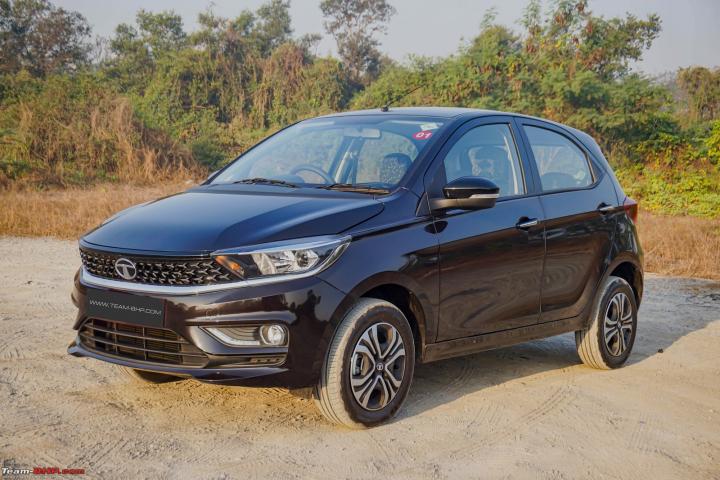
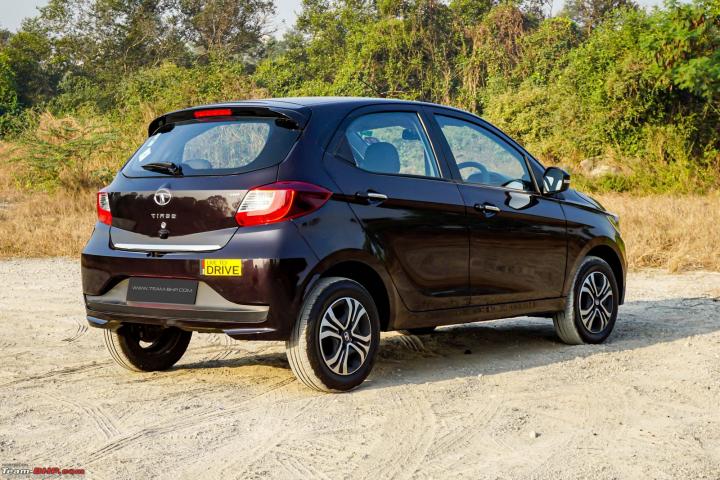
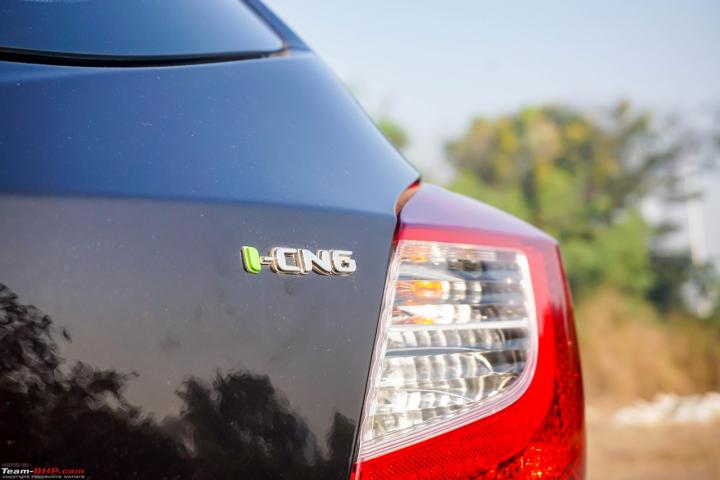





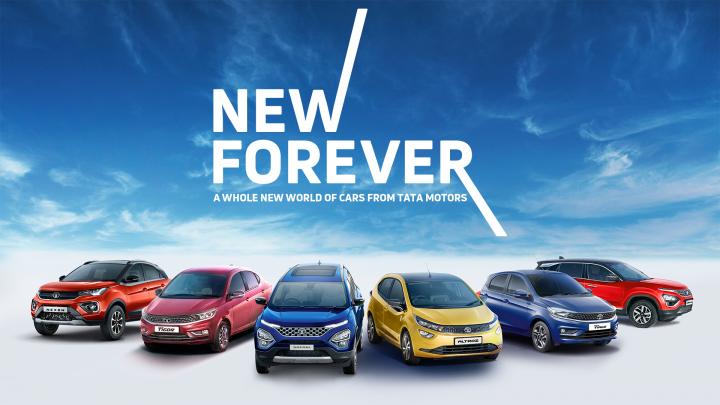
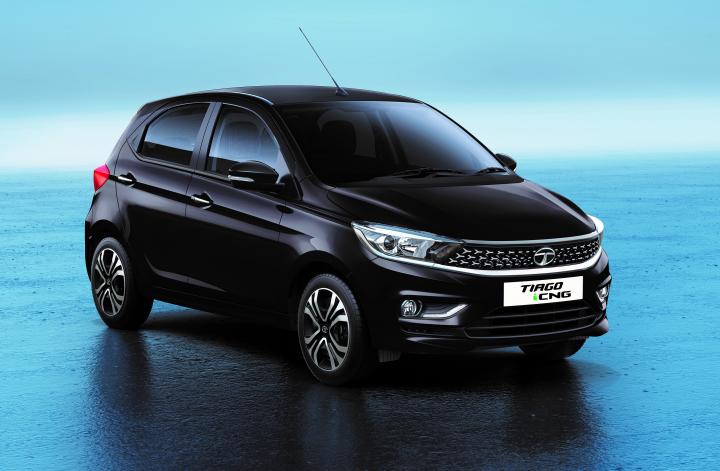

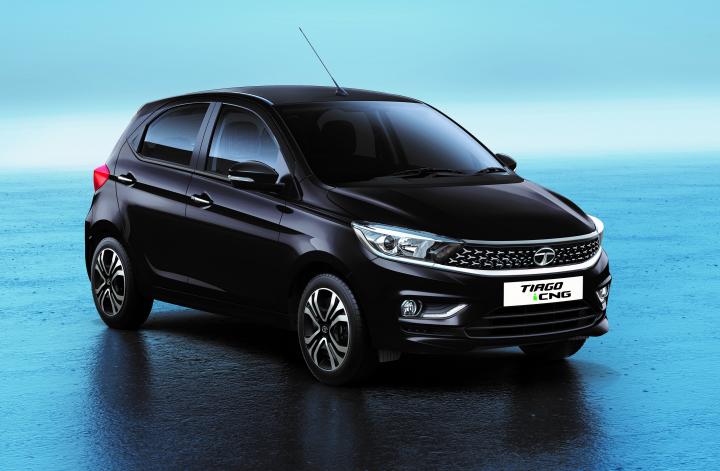

.jpg)
